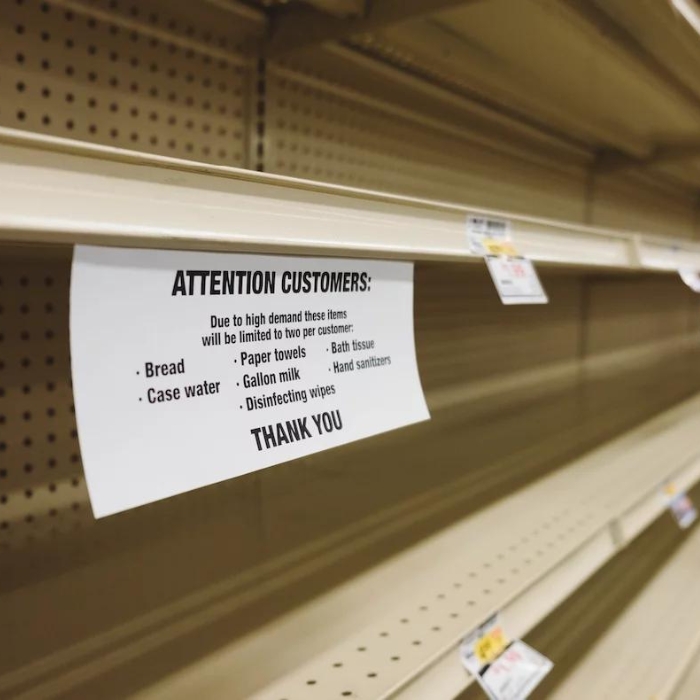The crucial role of Demand Planning

Indice
It is difficult to make predictions, especially about the future.
It is actually a much broader issue that has the ultimate goal of balancing workloads and stock buffers throughout the supply chain, maintaining an adequate level of service to meet market demands.
The real challenge lies in finding a balance point and maintaining it over time, through structured processes, budgeted decisions and above all sharing with the entire organization.
First, we try to better understand what are these inefficiencies that are caused by a poor or even absent process of Demand Planning:
Demand Planning in action: from data collection to forecasting
The first steps to build a structured Demand Planning process are to involve at the outset the key functions of product marketing and sales, to understand market trends and lay a solid foundation for the target.

- Historical data collection: the first step in the Demand Planning process is to collect sales data and other factors that may influence demand, such as seasonality, market trends, promotional activities, economic conditions, etc.
- Historical data analysis: once the data is collected, the historical data is analysed to identify trends. This analysis helps to understand how demand varies over the year and to predict future demand.
- Sales forecast: based on historical data and market forecasts, future demand is estimated. Sales forecasts take into account factors such as price, competition, market trends, promotional activities, economic conditions, etc. which should be executed and/or validated by the vendors, as far as possible.
The next steps are closely related to production and inventory, usually managed by the figure of Supply, but it is right to describe them for completeness of process.
The benefits of demand planning: a case with extraordinary results
One example of success that we can look at is a project recently undertaken by Lenovys consultants for a company producing complex products which, once it has received the order from the customer, assembled the components by manual operations with a Make to Order approach, and then proceeded to ship the finished product.
As it is easy to imagine, this management mode was not the most efficient one for optimizing internal production processes and at the same time meeting market demands. Not having a process of forecasting the finished product, the calculations for the necessary components were not accurate and often this caused blockages in the order fulfillment chain. It was not rare that the lack of a single component could not be fulfilled, creating a series of inefficiencies such as the jamming of production lines, unplanned allocation of the finished product’s storage space and the obvious delay in delivery of the order, with any penalties to be paid.
Together with the customer team we have therefore analyzed in depth what was the AS-IS of the current process, with particular attention to the dimensioning of the component stock, Time to Market (TtM) current, average order delay, … and the possible benefits of a more structured process.
This analysis has not only led to significant economic improvements, but it has also promoted human sustainability by providing employees with a more organized work environment and comprehensive information for making more forward-looking decisions. After a few days of work, the solution shared with the project’s Steering Committee provided for the implementation of a demand forecasting approach, thanks to which one should not wait for an order to start production, but the forecast of orders together with those already placed, could have guaranteed a faster response in terms of Lead Time and a better management of working capital in terms of stocks of components and finished product.
This new perspective not only made the production process economically sustainable, but also improved employees’ soft skills, encouraging interdepartmental collaboration and long-term planning, Thus promoting human sustainability within the organization. We started to implement the structured Demand Planning process, involving all the key figures of Demand, creating a Demand Planner figure that up to this moment was not foreseen in the company’s organizational chart because it was not necessary.
In addition to the soft benefits of a more orderly management which has led to longer time for decision making, a complete level of information at all levels of the company on the future quantity to be produced and a more forward-looking organization of production, there were also notable hard benefits such as:
- Time to market reduction of 27% (about 3 weeks out of 11)
- Reduction of inventory (in economic terms) by 25% (about 1M€ on a total stock of 4M€)
- Cost Reduction (production waste, delays, non-quality costs, transport…) of 15% (1.5M€ on 10M€)
In short, Demand Planning is a complex process that requires careful data analysis and effective collaboration between the different departments of the company to ensure production of sufficient quantities of product to meet market demand, but which can bring several benefits, which also take the form of a growth in economic and human sustainability.
Applying complex concepts such as these in practice may require expert guidance.
To deepen the topic and see methods and applications you can participate in the Master Class dedicated to Lean Manufacturing, which will provide you with the necessary skills to realize significant savings, Improve working conditions and promote economic sustainability, all while helping to build a more humane working environment.
Articolo a cura di:

Marco Fejer De Bük
former Senior Consultant Lenovys
Manager with more than fifteen years of experience in the Supply Chain, Retail and PMO with international corporate clients. He started his career in 2007 at Inditex, where he was in charge of special projects in Operations and Supply Chain, such as the implementation of RFID in all European Zara stores and shopping centers. In 2016, he joined Nextail, an innovative SAAS inventory management startup based in Madrid. During the first two years in the company he created the Italian branch helping fashion retailers (such as Kiko, Stefanel, Twinset, Versace,…) in the main world markets (Europe, USA and China) to improve their planning and distribution processes. For the next two years, he will lead the International Operations Team, a multicultural team of 12 managers based in major European capitals. In 2021 he joins Lenovys as a Manager, with specific focus on Digital Transformation, Inventory Management (Planning and Distribution), Operations and PMO.
Read more
Prossimi eventi










